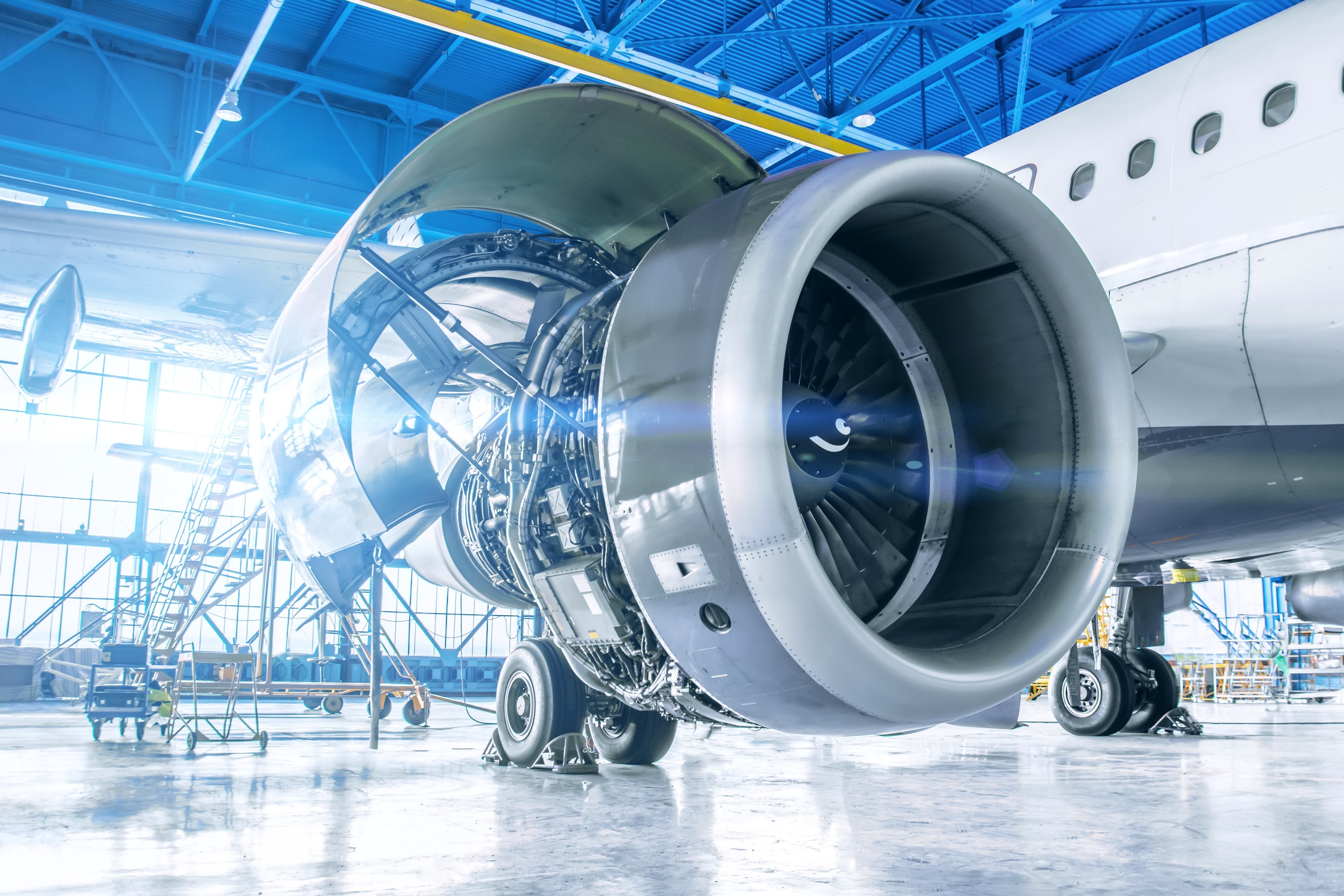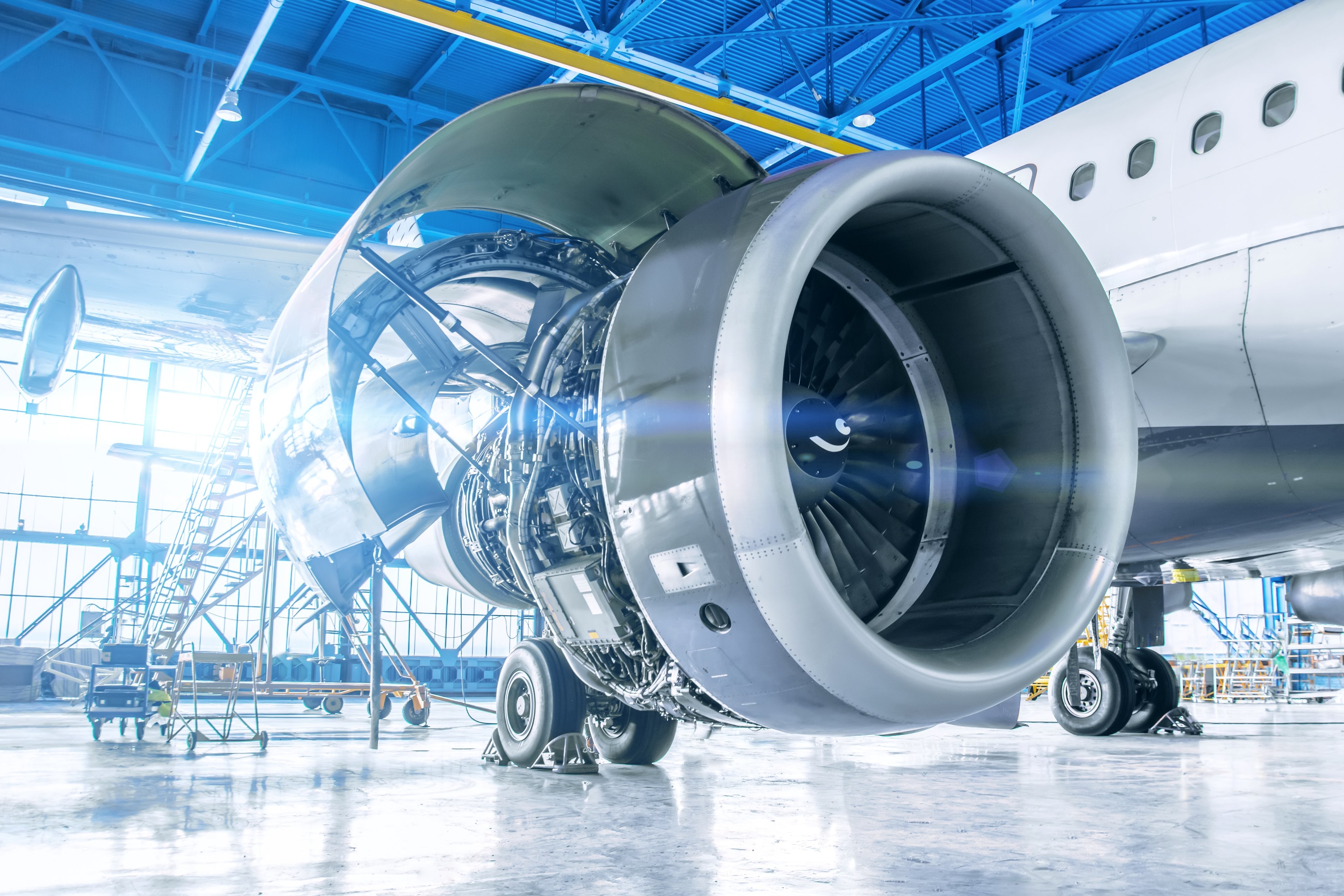It's no secret that investors are concerned with conditions in the commercial aviation sector. Indeed, passenger traffic remains significantly down compared to previous years, and there's still a lot of uncertainty around the timing of a recovery in commercial aviation.
That said, instead of being afraid of investing in the sector, why not take a glass-half-full approach and look at it as an industry about to embark on a multi-year recovery? I think that's the right approach, and stocks like Raytheon Technologies (RTX +0.24%), General Electric (GE 0.66%), and Honeywell International (HON 0.95%), along with others, are worth a look. Here's why.
The aviation industry continues to receive investment
There are two key supporting arguments. The first is that history suggests that there's never been a significant issue with capital availability in the airline industry. Plenty of airlines have gone bankrupt over the years, and the industry has struggled to cover its cost of capital in the past -- however, as the International Air Transport Association has noted, "On average, during previous business cycles, the airline industry has been able to generate enough revenue to pay its suppliers' bills and service its debt."

Image source: Getty Images.
The industry hasn't always been great for equity investors, but it has proved profitable for debt holders. Airlines are traditionally seen as attractive for debt holders because the debt is backed up by an attractive tangible asset, namely a fleet of aircraft.
On the other hand, airlines have not always been great investments for equity investors, so instead of picking winners among the airlines why not invest in the company's that supply the industry? Companies like Raytheon, GE, and Honeywell spring to mind.
The trend of capital flowing into the industry looks like it's continuing. For example, late last year GE's aircraft leasing business, GECAS, agreed to a deal with PIMCO Investment management, with the latter providing $3 billion to support aircraft asset financing. Furthermore, AerCap (AER +0.79%) appears to have had little difficulty in securing $24 billion in financing to support its subsequent agreement with GE to buy GECAS.
Air traffic data
Second, there's recently been a sense of optimism around air traffic data. Global business jet flights are already at 2019 levels. That's good news -- Honeywell's aviation outlook had called for a recovery to 2019 levels "by the summer of 2021," so it appears business aviation is ahead of schedule. Moreover, domestic commercial flights in China are now significantly ahead of 2019 and 2020 levels. If these data points are indicative of the global aviation industry, then they suggest that passengers are ready and willing to fly again given the opportunity.
What leading companies are saying
If investors can close their eyes and ears to the negative commentary in the headlines and listen to what companies are saying, the underlying picture is clear. For example, Honeywell expects the commercial aftermarket to gradually ramp up. Also, as we have already seen, business aviation (where Honeywell has substantive exposure) is running ahead of expectations.

Image source: Getty Images.
GE, another aviation giant, recently held its outlook meeting, and management outlined expectations for the aviation segment's revenue to grow in the coming years. Management sees GE Aviation segment margin improving from 5.6% in 2020 to low-double-digits in 2021. However, the most interesting takeaway from the presentation was that commercial aviation shop visits are expected to be at 2019 levels by 2023. This implies a strong multi-year recovery in the aviation aftermarket.
The recovery theme was also apparent in Raytheon Technologies' full-year 2021 guidance. Management took the effort to break out its full-year guidance in terms of the full-year numbers, and then gave second-quarter-to-fourth-quarter guidance compared to the same period in 2020. The idea was to demonstrate to investors how the company's commercial aerospace businesses will start to recover when it comes up against the slump in air travel that started in the second quarter of 2020.
As you can see below, the two businesses focused on commercial aerospace (Pratt & Whitney and Collins Aerospace) are set for dramatic increases in profitability. Granted, that's because air travel slumped so deeply in 2020, but it doesn't detract from the potential for multi-year improvement starting in the second quarter.

Data source: Raytheon Technologies presentations.
Looking ahead
There's still a lot of uncertainty around the timing of the recovery because so much depends on the success of calming the pandemic and governments relaxing air travel restrictions.
That said, recovery will surely come, capital continues to flow in the industry, travelers want to fly, and the leading aerospace suppliers are preparing for ongoing recovery. All told, investors should be optimistic about investing in the sector.






